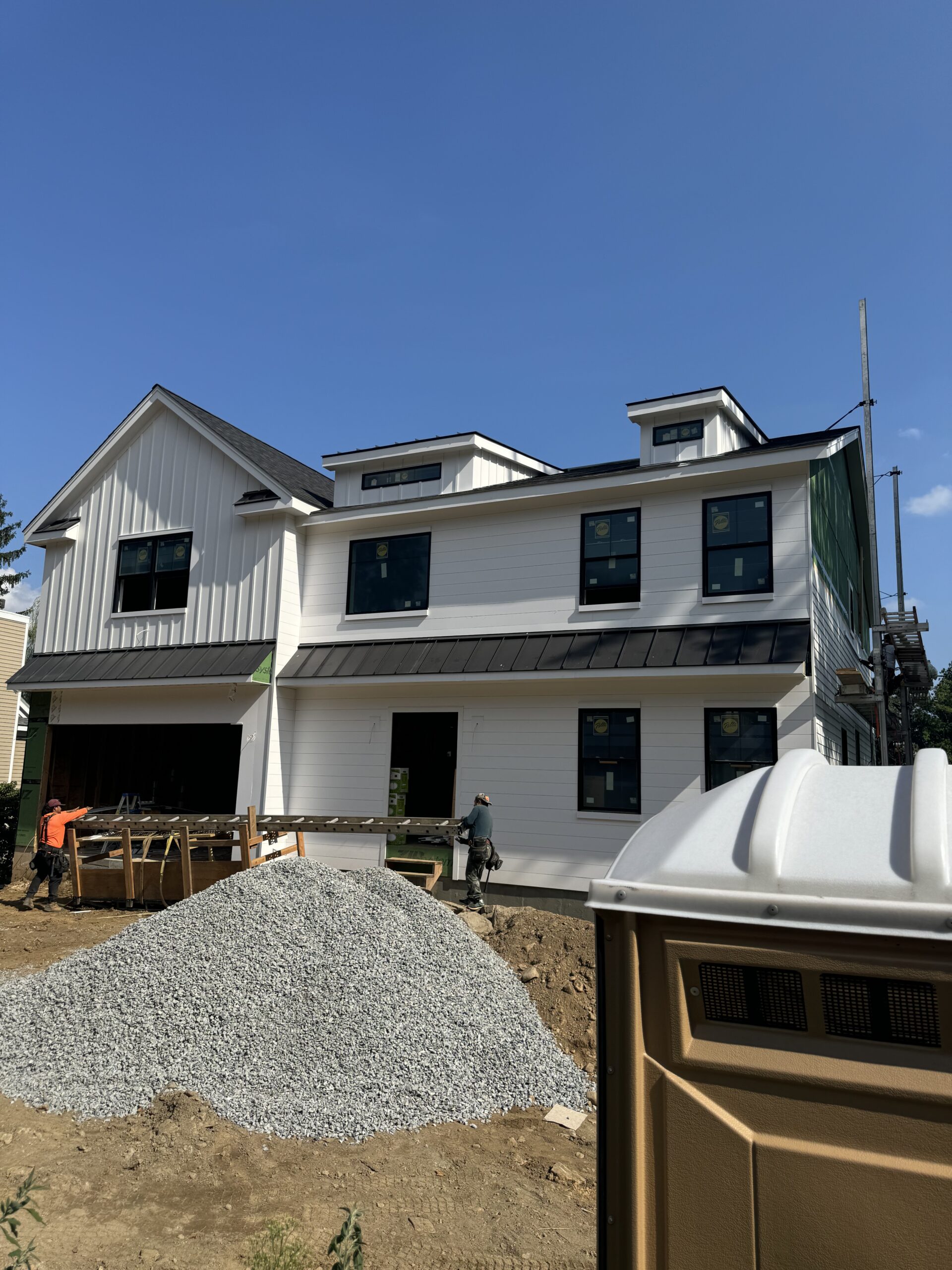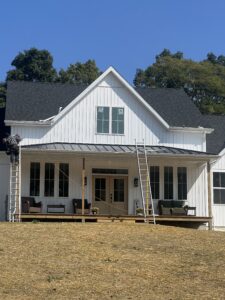The roof of a house is a crucial component that provides shelter, security, and comfort. It is the first line of defense against the elements of nature, safeguarding our homes from rain, snow, hail, and harsh sunlight. A well-maintained roof is not just about aesthetics; it’s about ensuring the structural integrity of your home. It serves as an insulator, maintaining a comfortable temperature inside the house, reducing energy consumption, and contributing to a sustainable environment. However, roofs are not invincible and over time, they wear and tear due to ongoing exposure to weather conditions and the aging process. It is vital to keep an eye on the health of your roof and take timely action to maintain its efficacy.
Neglecting roof maintenance can lead to a myriad of problems, some of which can be quite catastrophic and costly. A dilapidated roof can cause leaks that may result in water damage to your property, leading to structural weaknesses and the growth of harmful mold. Besides, an unmaintained roof can also lead to poor insulation, escalating your energy bills. In worst-case scenarios, a severely damaged roof could also potentially collapse, endangering the safety and well-being of your loved ones.
The financial strain of these major roof repairs or replacements can be overwhelming. Therefore, regular roof maintenance is not just an option, but a necessity, to avoid such potential dangers and costs. This article will guide you through the top signs that your roof may need replacement, helping you make an informed decision about your home’s maintenance needs.
Age of Your Roof
Understanding Roof Lifespan
The first crucial sign that your roof may need replacement revolves around its age. The lifespan of a roof varies significantly depending on the type of materials used during its construction. Asphalt shingles, the most common roofing material, typically last between 15 and 30 years. Metal roofs can have a lifespan of up to 50 years or more, while slate and tile roofs can last over a century if properly maintained. However, these life expectancies are contingent on factors such as climate, exposure to extreme weather conditions, and the level of maintenance conducted.
The Impact of Aging on Roof Performance
Even if your roof is made from durable materials, it does not automatically mean it will reach its maximum lifespan. As your roof ages, its performance inevitably declines. Older roofs are less efficient at repelling water, maintaining temperature, and protecting your home from the elements. An increase in energy bills due to poor insulation, recurring leaks despite regular patches, or shingles that start to curl, crack, or disappear entirely are common signs of an aging roof.
Why Timely Replacement Matters
Older roofs are more susceptible to damage from extreme weather and are less likely to recover from the impacts of storms or heavy winds. The age of your roof is a vital factor to consider when assessing whether it needs to be replaced. Regular inspections help identify potential problems early, but if your roof has surpassed its expected lifespan, planning for a replacement is a proactive step. Tackling this before a serious issue occurs can prevent further damage and costly repairs.
Visible Wear and Tear
Identifying Common Signs of Wear
Another prominent indicator that your roof may need replacement is visible wear and tear. This can manifest in many forms, all of which should be taken seriously due to the vital role your roof plays in protecting your home. Common signs include broken or missing shingles, curling or buckling shingles, and loss of granules. Additionally, sagging areas on the roof surface could point to severe structural issues. If your roof has a chimney, inspecting the flashing for damage or rust is crucial, as deterioration in this area can lead to water leaks.
The Role of Weather in Roof Deterioration
Extreme weather conditions such as heavy rain, strong winds, hail, and intense heat can significantly accelerate roof deterioration. High wind speeds can lift and break shingles, while heavy rain can exploit existing vulnerabilities, causing leaks or accelerating decay. Hail can cause bruising or cracking of the shingles, and intense heat can lead to warping or drying out of the materials, making them more susceptible to damage.
The Importance of Regular Inspections
Different roofing materials respond to weather conditions in varied ways. Some materials are more resistant to certain weather elements than others, but constant exposure to extreme weather will inevitably lead to faster deterioration. The rate at which this happens can also depend on the quality of installation and the level of maintenance. If you live in an area prone to extreme weather, conducting regular roof inspections and addressing signs of wear and tear immediately is essential.
Leaks and Water Damage
Recognizing Interior Signs of Roof Damage
The next critical area to inspect is the interior of your home for signs of leaks and water damage. What may seem like a minor leak can be a telltale sign of more extensive damage to your roof. These leaks may appear as dark spots or trails on the ceiling, peeling or bubbling paint, damp walls, or unexpected increases in energy bills due to compromised insulation. Water stains on attic insulation or fluctuations in indoor temperature may also indicate a problem.
The Consequences of Ignoring Leaks
Water damage, if left unchecked, can lead to the growth of mold and mildew, which pose significant health risks. It can also result in structural damage to your home, as water seeps into the wooden support structures, causing rot and weakening the overall stability of your house. Over time, this could compromise the safety of your home and result in costly repairs.
Addressing Leaks Before They Escalate
Leaks can indicate more significant issues with your roof, such as widespread deterioration or improper installation. Persistent leaks, even minor ones, can strip the roof of its protective layers, allowing more water to penetrate and exacerbating the damage. Regular inspections, especially after extreme weather events, can help identify and address these leaks before they lead to more severe problems. Taking immediate action can save you from extensive damage and the need for a complete roof replacement.
Sagging Roof Deck
Understanding the Risks of a Sagging Roof
Another strong indicator that your roof may need replacement is a sagging roof deck. When the boards or decking that support your shingles begin to sag, they are no longer able to maintain the weight they are tasked with upholding. This can be a serious concern as it often points to more severe underlying issues such as long-term water damage, decay, or structural failure.
The Potential Dangers of Roof Sagging
A sagging roof deck is not a problem to be taken lightly. The uneven surface creates areas where water can pool, accelerating further damage. Over time, the pressure from this extra weight can result in a catastrophic roof collapse, endangering the safety of the occupants.
Seeking Professional Assessment
If you observe a sagging roof deck, contacting a professional roofing contractor immediately is the best course of action. Roofing is a dangerous job that requires the right skills, experience, and safety equipment. A professional roofer can assess the extent of the sagging and the underlying issues causing it. Based on their evaluation, they can provide a comprehensive plan for either repairing the damage or replacing the roof entirely.
Damaged or Missing Shingles
Why Shingles Are Essential
Shingles form the outermost protective layer of a roof, shielding the home from harsh weather conditions. When this layer is compromised due to wear or damage, the underlying structure becomes vulnerable to water infiltration, potentially leading to severe structural damage.
Identifying Shingle Damage
Regularly inspecting the roof for cracked, curling, or buckling shingles is essential. Missing shingles or areas where the granules have worn away indicate aging materials. Shingle granules found in gutters or at the base of downspouts suggest that the shingles are deteriorating and nearing the end of their lifespan.
When Replacement Becomes Necessary
Large patches of discolored shingles can indicate mold or algae growth, which can spread quickly and cause further damage. If the damage is extensive, replacing the roof is often the most effective solution to prevent health hazards and further structural issues.
Excessive Moss or Algae Growth
The Impact of Moss and Algae on a Roof
Moss and algae thrive in damp, shaded areas and can trap moisture against the roof surface. Over time, this moisture can seep into the roofing material, causing it to rot and deteriorate. The roots of moss can lift shingles, leading to potential leaks.
Preventing and Managing Growth
Regular cleaning and maintenance can help prevent moss and algae growth. If the growth is extensive, hiring a professional cleaning service may be necessary. Trimming overhanging branches and installing zinc or copper strips can also help prevent moss and algae accumulation.
When Growth Signals Roof Failure
If moss and algae have caused significant damage to the roofing material, or if the infestation is too severe to manage, a roof replacement may be the best solution. A professional roofer can assess the damage and determine the most effective course of action.
Conclusion
In conclusion, there are several telltale signs that your roof may need replacement. These include an increase in your energy bills, as damage to your roof can lead to a loss in insulation efficiency, driving up heating and cooling costs. Other signs include visible damage such as missing or curling shingles, sagging roof deck, and the presence of algae or moss. Additionally, if your roof is already past its expected lifespan, it might be more cost-effective to replace it rather than continue with constant repairs.
The importance of regular roof inspection and maintenance cannot be overstated. Regular checks can help identify potential issues before they escalate into major problems, saving you money in the long run. This includes monitoring your energy bills for any unexplainable increases, which could be an indicator of a failing roof. Keeping an eye on the physical condition of your roof can also help detect visible signs of damage early.
To ensure the longevity of your roof and the safety of your home, it’s advised to get your roof inspected by a professional if you notice any of the mentioned signs. A professional can provide a thorough assessment and guide you on whether a repair would suffice or if a replacement is necessary. Remember, the roof is an essential part of your home’s structure and therefore requires your attention and care.
Name, Address, and Phone
Realize Services | Connecticut
180 Emerald Pl, Stratford, Connecticut, 06614, US
475-447-1701
Social Media


